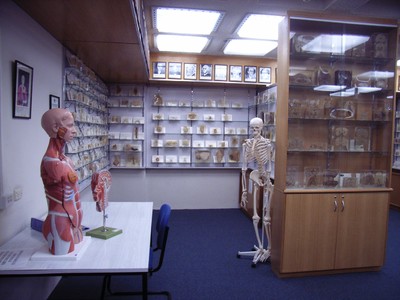University Cultural CollectionsTangible Evidence of Knowledge
R.A. Rodda Pathology Museum
The R.A.Rodda Museum of Pathology was established in 1966 by the foundation Professor of Pathology, Dr Roland Arnold Rodda (1917–93), as a teaching and research facility.
The collection specialises in diseased organs from samples collected primarily through autopsies, and surgical specimens from the years soon after it was established. The current collection is around 2,700 items preserved in Wentworth’s solution and presented in perspex containers. Every organ system of the body is represented.
The initial collection was driven by Rodda’s fascination with brain disease and the museum has a notable selection of specimens such as tumours, stroke and Huntington’s disease. It also contains a human parasite collection.
